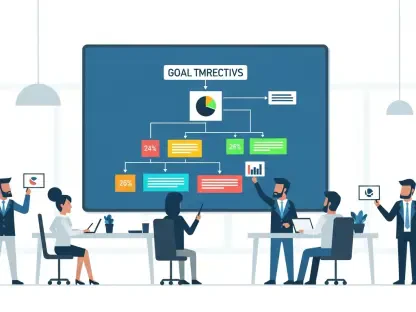In the ever-fluctuating world of business, uncertainty is the only constant. From the unpredictable sway of retail trends to the threats lurking in cyber shadows, organizations grapple daily with potential pitfalls. A compelling question arises: Could harnessing advanced risk prediction models offer the strategic clarity that businesses have long sought?
The Imperative of Understanding Risk
In the face of a rapidly evolving market landscape, the ability to anticipate and manage risk has never been more critical. Organizations across sectors, whether retail facing fluctuating consumer demands or finance grappling with credit risks, need robust strategies to navigate challenges. A comprehensive approach to risk prediction can transform daunting uncertainties into manageable insights, making it indispensable for survival and success in competitive industries.
Unveiling the Mechanics of Risk Prediction Models
Risk prediction models merge statistical analysis with cutting-edge machine learning techniques to deliver precise insights into potential business challenges. These models, powered by AI, refine predictive accuracy and efficiency by analyzing patterns in large datasets. For instance, in retail, machine learning can forecast demand based on consumer behavior trends, while in finance, models predict credit risk through an evaluation of various financial indicators, thus revolutionizing traditional risk management approaches.
Supported by advanced AI functionalities, risk prediction models continually update and improve their predictive accuracy. This dynamic capacity allows businesses to respond swiftly to market shifts and emerging threats, turning prediction into decisive action. A focus on accuracy and efficiency ensures that businesses are not just reacting to present conditions but anticipating future ones.
Leveraging Applications Across Industries
Industries have begun to explore the multifaceted applications of risk prediction models, showcasing impressive results. In retail, businesses rely on these models for managing inventory and predicting demand, minimizing losses from excess stock. The finance sector has embraced them for credit risk assessment and fraud detection, greatly enhancing financial security and operational efficiency.
Healthcare also benefits from predictive modeling, revolutionizing patient care. By identifying at-risk patients through data patterns, healthcare providers can offer timely interventions, improving outcomes and streamlining resource allocation. These diverse applications underscore the transformative potential of risk prediction across various sectors.
Insights from Experts and Real-World Successes
Leading data strategists emphasize AI’s evolving role in risk management, underlining its transformative impact. Experts illustrate how businesses have successfully integrated prediction models, sharing compelling anecdotes that highlight the profound influence these models can have. For example, a leading retailer decreased inventory costs significantly by employing AI-driven risk forecasts, showcasing the tangible benefits of predictive analytics in action.
The narratives of industry experts and successful case studies serve as a guiding light for companies eager to integrate these advanced models. Their experiences provide a roadmap for organizations to navigate the complexities of implementation, highlighting strategies that yield measurable business outcomes.
Implementing Risk Prediction in Business Strategies
To effectively integrate risk prediction models, organizations need to start by identifying specific areas of uncertainty in their operations. Developing a basic model prototype involves understanding the data landscape, choosing suitable analytic techniques, and iteratively refining the model. Emphasizing practical strategies, such as continuous improvement and model validation, ensures sustained effectiveness over time.
Best practices dictate the importance of ongoing model refinement and validation, integral to maintaining relevancy and accuracy. While risk prediction models provide critical insights, their power lies in continual evolution, adapting to emerging patterns and threats, thereby ensuring businesses stay ahead of the curve.
Conclusion: Navigating the Future with Confidence
Businesses that embraced predictive modeling have positioned themselves to turn uncertainty into strategic advantage. Implementing these models involved methodical planning and execution, yet the reward was significant: enhanced decision-making capabilities and fortified resilience. Looking forward, companies now ponder broader integration, continuously honing these tools to further cement their competitive edge and ensuring long-term success in an unpredictable world.









